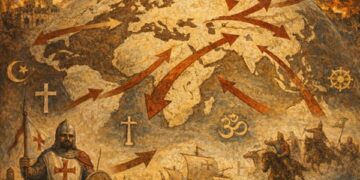
As global life expectancy increases and birth rates decline, societies worldwide are experiencing a demographic shift toward older populations. According to the United Nations, the number of people aged 65 and above is projected to double by 2050. While this aging population is a sign of medical and technological advancement, it also brings forth significant societal challenges, especially in intergenerational gaps. These gaps reflect not just age differences, but diverging values, expectations, and priorities between the older and younger generations.
Understanding the Aging Population
An aging population refers to a society in which a growing proportion of its members are elderly. This trend is particularly noticeable in countries like Japan, Italy, and Germany, where the fertility rate has dropped below the replacement level and healthcare systems have extended lifespans.
Implications include:
- Economic pressure on pension systems and healthcare infrastructure.
- Labor shortages, as fewer young people are available to replace retiring workers.
- Changing consumption patterns, with higher demand for healthcare, assisted living, and age-friendly services.
Intergenerational Gaps: More Than Just Age
Intergenerational gaps are differences in attitudes, behaviors, and lifestyles between older and younger generations. These can be seen in areas such as:
- Technology Use
o Older generations may struggle to adapt to rapidly changing digital tools, while younger people grow up immersed in technology.
o Example: While seniors might prefer in-person communication or phone calls, Gen Z and Millennials lean heavily on messaging apps and social media.
- Workplace Values
o Baby Boomers often emphasize job loyalty and hierarchical structures, whereas younger workers value flexibility, work-life balance, and purpose-driven jobs.
o This divergence can lead to misunderstandings and workplace tension.
- Political and Social Views
o Generational differences often surface in opinions on climate change, gender roles, immigration, and identity politics.
o Example: In many countries, youth-led movements advocate for climate action, while older political leaders may prioritize economic stability over environmental reform.
Challenges of an Aging Population in a Youth-Centric World
- Strain on Intergenerational Support Systems
o As families shrink, fewer young people are available to support aging parents, both financially and emotionally.
o Urbanization also contributes to isolation among the elderly.
- Ageism and Stereotyping
o Older people are often viewed as less capable or resistant to change, which can lead to their exclusion from innovation-driven industries.
- Policy and Infrastructure Gaps
o Many public policies are not adequately equipped to address the needs of both the young and the elderly. This can fuel intergenerational resentment, especially in areas like education funding vs. eldercare.
Opportunities for Bridging the Gap
Despite the challenges, aging populations and intergenerational differences offer opportunities for cooperation and mutual learning:
- Intergenerational Learning Programs
o Initiatives that bring older and younger people together—for mentorship, skill exchange, or community building—can reduce stereotypes and foster empathy.
o Example: “Grand mentor” programs in the UK match retirees with youth from disadvantaged backgrounds.
- Lifelong Learning and Digital Literacy for Seniors
o Training older adults in digital tools helps them stay connected, reduces isolation, and encourages cross-generational communication.
- Inclusive Policymaking
o Governments must craft policies that balance the interests of all generations, such as flexible retirement plans, affordable education, and investment in youth employment.
Conclusion
The aging population and intergenerational gaps are defining issues of our time. While they pose economic, cultural, and social challenges, they also open up new avenues for innovation, inclusion, and dialogue. By fostering mutual respect and creating platforms for collaboration, societies can turn the generational divide into a bridge—ensuring a future where all age groups thrive together.
The writer is a member of Faculty of Mathematics, Department of General Education SUC, Sharjah, UAE. Email: reyaz56@gmail.com




